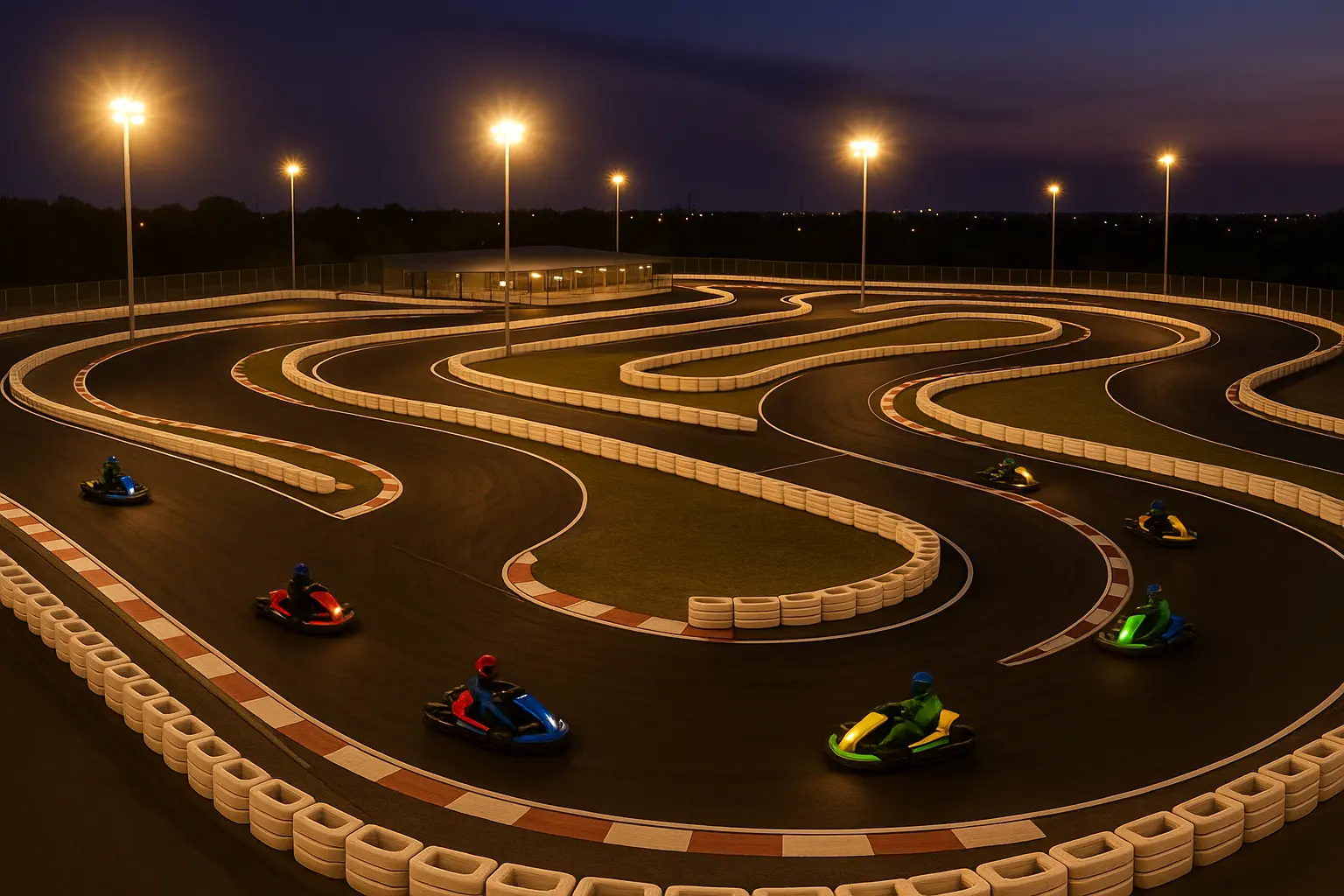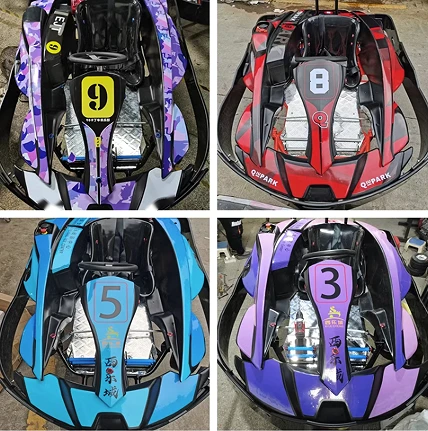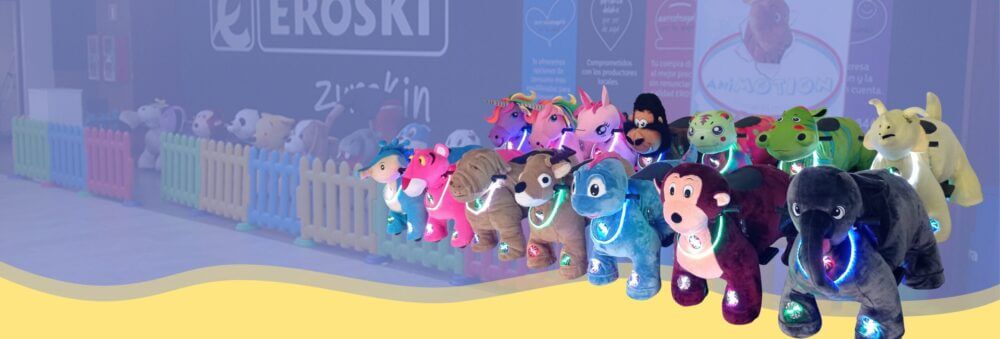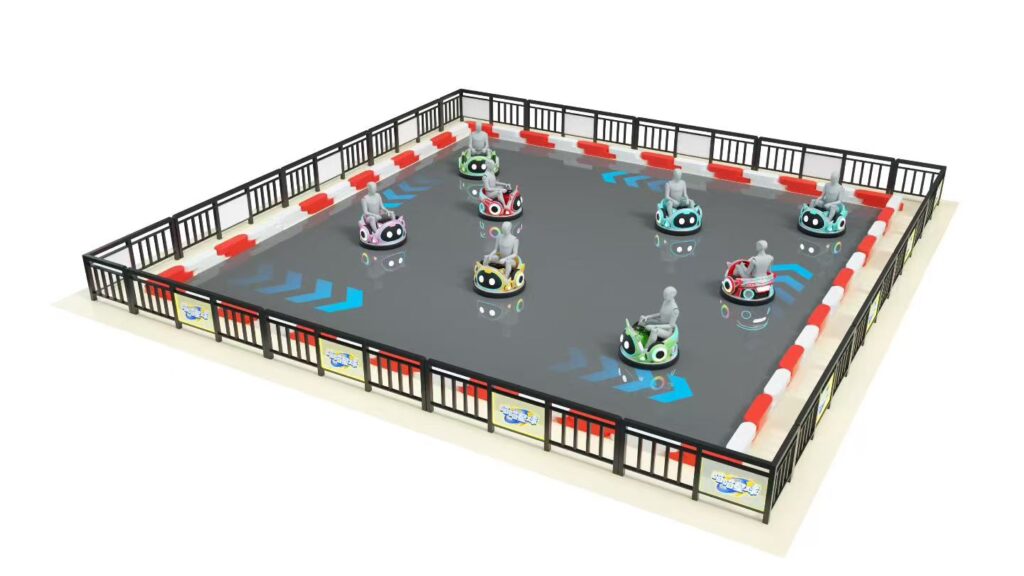Building a successful karting facility requires more than just an open space and some karts. The difference between an ordinary track and a truly exceptional racing venue lies in the quality and precision of its essential components. Whether you’re planning a new facility or upgrading an existing one, understanding the key elements that create a high-performance karting experience is crucial for both safety and customer satisfaction.
Modern karting has evolved far beyond simple recreational racing. Today’s drivers expect professional-grade facilities that deliver thrilling experiences while maintaining the highest safety standards. The foundation of any outstanding karting venue rests on three critical pillars: comprehensive safety systems, precision timing technology, and thoughtful track design. Each component works together to create an environment where both novice drivers and experienced racers can push their limits safely.
Safety Barrier Systems: The Foundation of Track Protection
The most visible and arguably most important safety feature of any karting track is its barrier system. These protective elements serve multiple purposes beyond simply keeping karts on track. They absorb impact energy, define the racing line, and provide visual guidance for drivers navigating at speed.
Modern barrier technology has moved far beyond traditional tire walls and concrete blocks. Today’s advanced systems use high-density polyethylene materials that flex on impact, reducing the force transmitted to both driver and kart. These barriers maintain their protective properties while requiring minimal maintenance compared to older alternatives.
The most effective barrier systems feature energy absorption capabilities that can handle impacts at racing speeds without causing dangerous rebounds. Professional-grade barriers are designed to meet specific safety standards and regulations, ensuring they provide adequate protection and are legally compliant for use in professional and recreational settings. This compliance becomes especially important when hosting organized racing events or operating in jurisdictions with strict safety requirements.
Installation flexibility represents another crucial consideration. The best barrier systems allow for track layout modifications without requiring complete reconstruction. This adaptability proves invaluable for venues that want to refresh their track design or accommodate different event types. Water-filled barriers offer one solution, providing good impact absorption while remaining repositionable with appropriate equipment.
Visibility enhancement is an often-overlooked benefit of modern barrier systems. Unlike traditional tire walls that can obstruct sightlines, contemporary barriers maintain spectator viewing while protecting participants. This design consideration improves the overall experience for both drivers and observers, contributing to the venue’s entertainment value.
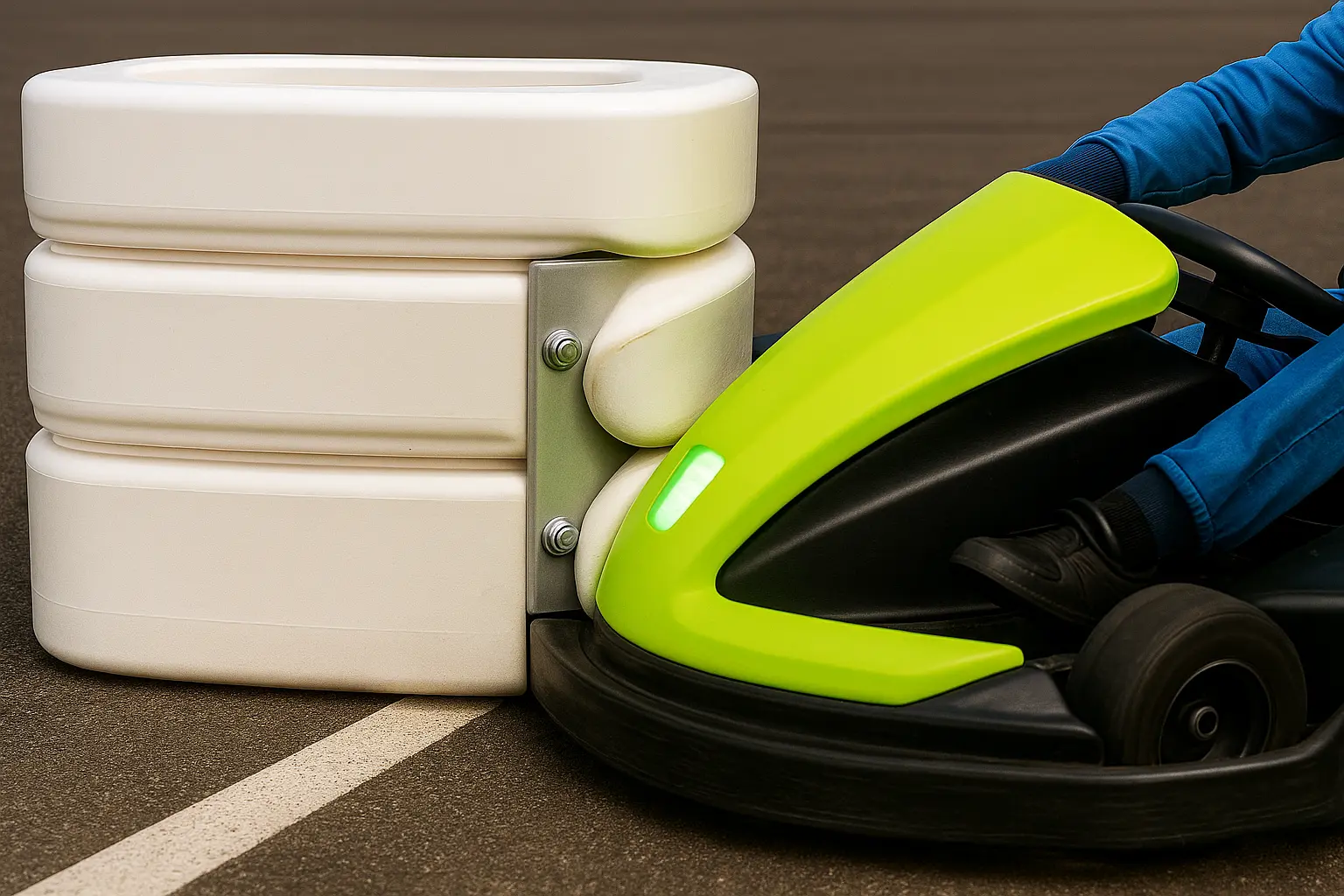
Precision Timing Systems: Measuring Every Millisecond
Accurate timing transforms karting from casual recreation into serious competition. Professional timing systems provide the data foundation that enables lap-by-lap analysis, race management, and driver development. These systems have evolved from simple stopwatches to sophisticated networks that track multiple participants simultaneously with precision measured in thousandths of seconds.
Modern timing solutions offer real-time lap recording, multi-kart tracking capabilities, and integration with race management software. This integration allows for immediate result posting, automatic position updates, and comprehensive race data collection. Drivers can access their performance metrics instantly, comparing times across sessions and identifying areas for improvement.
Transponder-based systems represent the current standard for professional karting timing. Each kart carries a unique transponder that communicates with sensors placed around the track. This technology eliminates timing disputes while providing consistent, reliable measurements regardless of weather conditions or track congestion.
Advanced features like sector timing break down each lap into segments, allowing drivers and instructors to identify specific areas where time can be gained. This granular data proves especially valuable for driver coaching and kart setup optimization. Some systems even integrate with electronic go-karts from manufacturers like Minye Fun, providing additional telemetry data about battery performance, motor efficiency, and energy regeneration.
Live timing displays enhance the spectator experience by showing real-time positions, gap times, and fastest laps. These displays create excitement and engagement, encouraging return visits and building a competitive community around the venue. Digital integration allows for online sharing of results and social media engagement, extending the marketing reach of each racing session.
Track Surface and Layout Optimization
The track surface serves as the interface between kart and circuit, directly affecting safety, performance, and maintenance requirements. Surface selection involves balancing grip levels, weather resistance, and long-term durability. The choice between asphalt and concrete depends on climate conditions, budget constraints, and intended use patterns.
Professional tracks often use specialized resins that provide grip similar to competition race tracks, ensuring consistent performance throughout racing sessions. These surfaces maintain their characteristics regardless of temperature fluctuations or usage intensity, providing predictable handling that builds driver confidence.
Layout design principles focus on creating challenging yet safe racing environments. Effective track designs balance challenging turns with straightaways and wider radius curves, creating opportunities for overtaking while accommodating drivers of varying skill levels. The goal is producing a layout that remains engaging for experienced drivers while remaining accessible to newcomers.
Elevation changes add excitement and technical challenge without requiring additional space. Multi-level designs maximize track length within confined areas, though they require higher initial investment and ongoing structural maintenance. Single-level tracks offer cost advantages and easier maintenance while still providing excellent racing experiences through thoughtful corner design and strategic placement of technical sections.
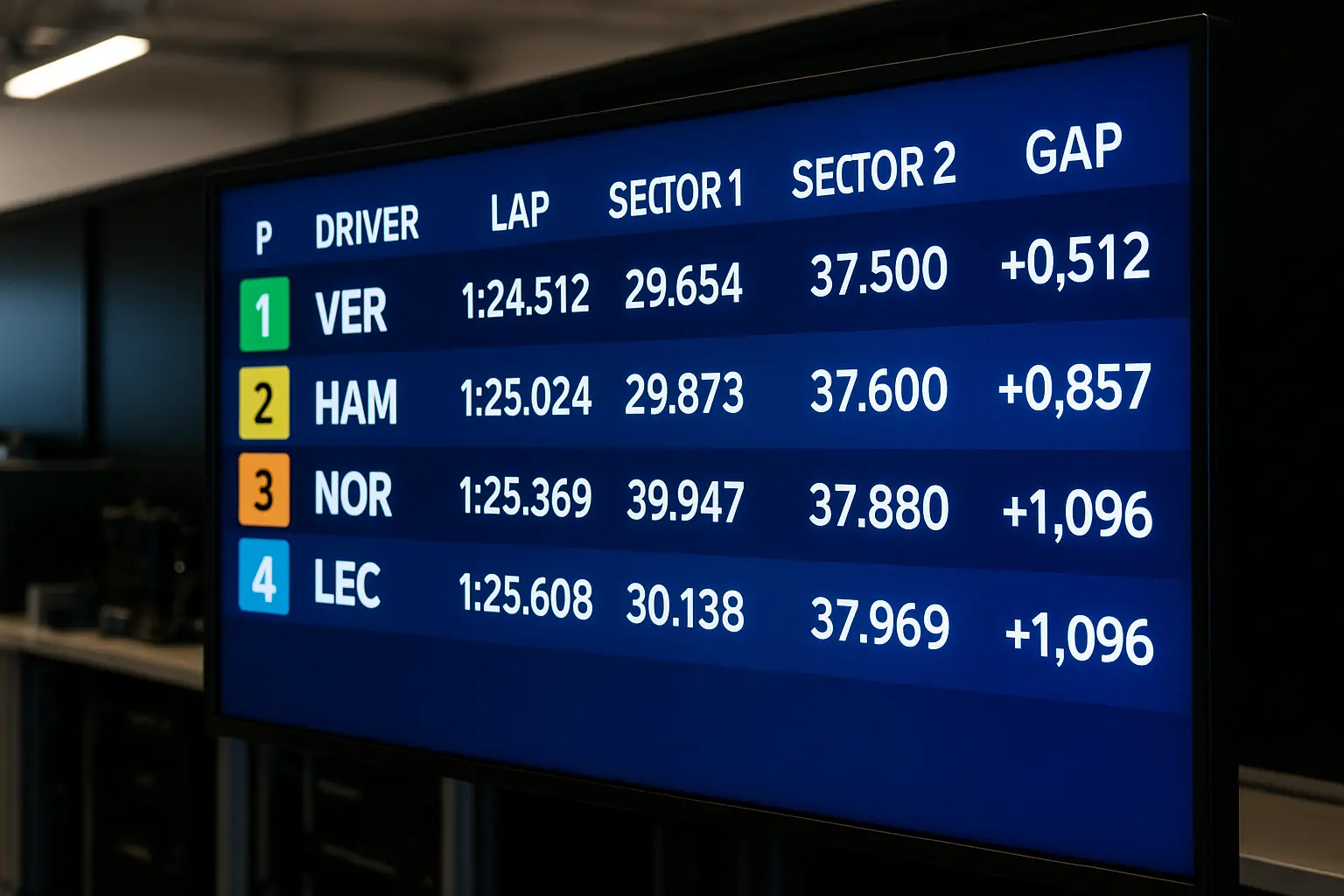
Advanced Lighting and Technology Integration
Professional lighting transforms karting from a daytime-only activity into an all-hours entertainment option. LED sports lights and flood lights offer adjustable brightness settings and can be dimmed for certain events or increased during night races. This flexibility allows venues to create different atmospheres for various event types while maintaining optimal visibility for safety.
High-quality lighting systems must meet specific standards such as DIN EN 12193 for sports facility lighting, providing uniform illumination without creating shadows or glare that could impair driver vision. Strategic placement of lighting fixtures illuminates critical areas like corners, barriers, and elevation changes while avoiding direct glare into drivers’ eyes.
Smart lighting controls enable automated operation based on occupancy, time of day, or event schedules. These systems reduce energy consumption during off-hours while ensuring full illumination when needed. Integration with timing systems can trigger lighting changes based on race conditions, such as caution periods or session transitions.
Safety communication systems complement lighting infrastructure by providing clear flag signals and emergency notifications. Digital flag systems use LED displays positioned around the track to communicate race conditions, eliminating ambiguity and improving response times. These systems integrate with race management software to automatically display appropriate signals based on track conditions.
Electronic Kart Infrastructure and Future Considerations
The growing popularity of electric karts demands specialized infrastructure considerations. Unlike traditional gas-powered karts, electric models require charging stations, battery management systems, and climate-controlled storage areas. Companies like Minye Fun offer complete electric karting solutions that integrate seamlessly with modern track infrastructure.
Charging infrastructure must accommodate rapid turnaround times between sessions while maintaining battery health for long-term durability. Smart charging systems monitor individual battery conditions and optimize charging cycles to maximize performance and lifespan. This technology reduces operational complexity while ensuring consistent kart performance throughout the day.
Climate control becomes critical for battery storage and charging areas. Temperature fluctuations affect battery performance and longevity, making environmental control systems essential for venues operating electric kart fleets. Proper ventilation and fire suppression systems address safety concerns specific to battery-powered vehicles.
Future-ready facilities incorporate connectivity infrastructure that enables advanced features like real-time telemetry, remote diagnostics, and over-the-air updates. This technology foundation supports continuous improvement and feature additions without requiring physical infrastructure changes.
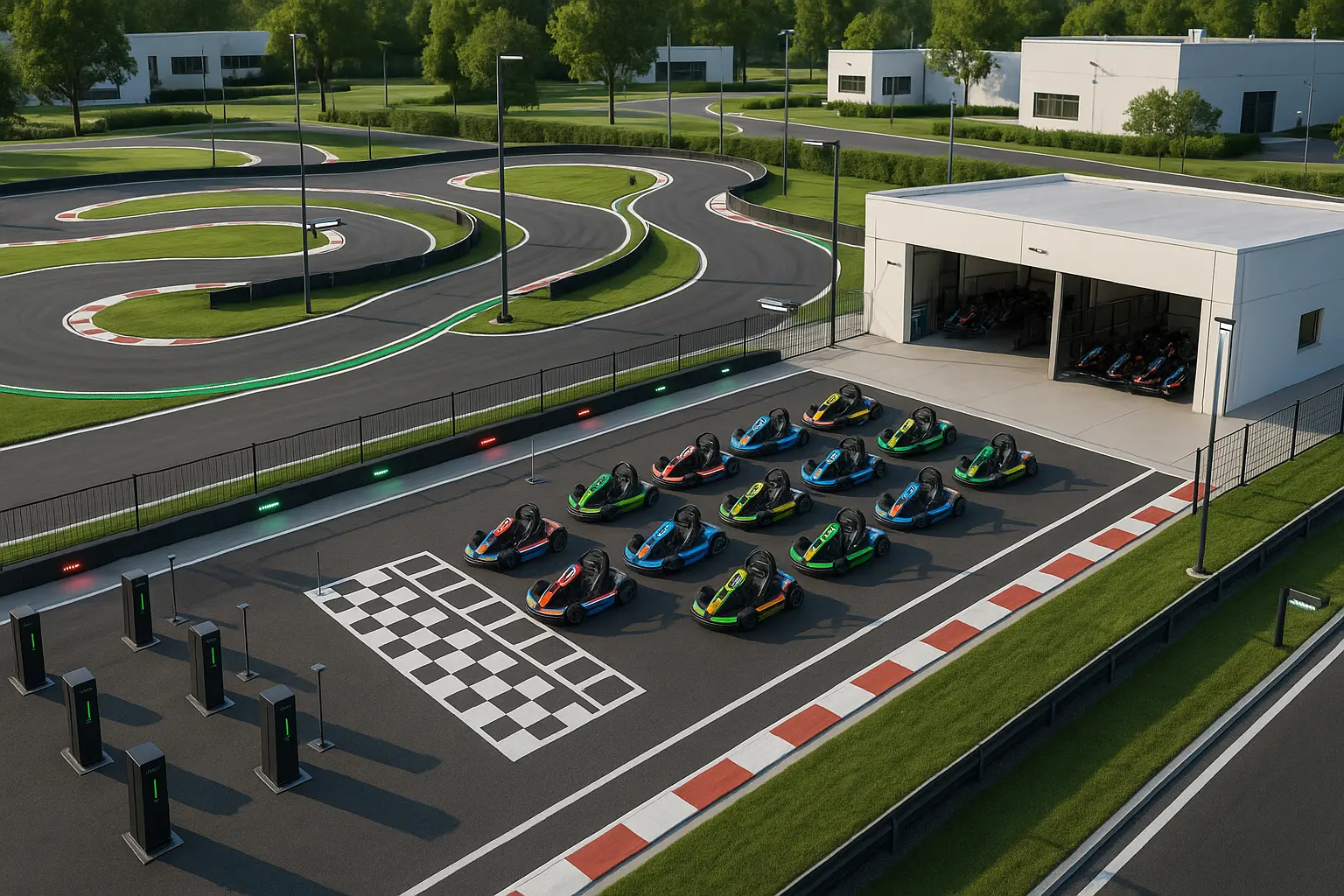
Investment Priorities and Return on Investment
Track construction budgets vary significantly based on design complexity, with single-level tracks ranging from 85,000to85,000 to 85,000to175,000 and multi-level designs starting at $375,000. Understanding these cost ranges helps operators prioritize investments based on their specific market and operational goals.
Safety systems should never be compromised regardless of budget constraints. High-quality barriers, proper lighting, and reliable timing systems form the foundation of any successful karting operation. These components protect both customers and business investment while enabling premium pricing for superior experiences.
Phased implementation strategies allow venues to spread investment over time while maintaining operational capability. Starting with essential safety systems and basic timing, operators can add advanced features like enhanced lighting, digital displays, and premium amenities as revenue grows. This approach reduces initial financial risk while providing upgrade pathways.
Long-term maintenance costs significantly impact total ownership expenses. Modern barrier systems and LED lighting reduce maintenance requirements compared to traditional alternatives, providing cost savings over the facility’s operational lifetime. Energy-efficient systems also reduce ongoing operational expenses, improving profitability and environmental sustainability.
Creating Competitive Advantages Through Quality Components
High-performance karting facilities differentiate themselves through attention to detail and commitment to quality experiences. Every component choice affects customer perception, operational efficiency, and long-term success. Venues that invest in professional-grade infrastructure position themselves as premium destinations capable of hosting serious competitions and attracting enthusiast communities.
The integration of modern technology with traditional racing excitement creates compelling experiences that encourage repeat visits and positive word-of-mouth marketing. Features like live timing displays, professional lighting, and high-quality electric karts from manufacturers like Minye Fun demonstrate commitment to excellence that customers notice and appreciate.
Staff training and operational procedures must match infrastructure quality to deliver consistent experiences. Well-designed facilities enable staff to focus on customer service rather than managing problematic equipment or safety concerns. This operational efficiency translates directly into improved customer satisfaction and business profitability.
Conclusion: Building Tomorrow’s Karting Experiences Today
The karting industry continues evolving toward higher performance, improved safety, and enhanced sustainability. Successful venue operators recognize that infrastructure investments today determine competitive position for years to come. By prioritizing proven technologies like professional barrier systems, precision timing, and comprehensive lighting while preparing for future innovations like advanced electric kart integration, operators can build facilities that thrive in an increasingly competitive entertainment landscape.
The key to success lies in understanding that each component contributes to the overall experience. Safety systems protect participants while enabling confident racing. Timing systems provide the competitive framework that transforms casual driving into serious sport. Quality lighting extends operating hours and creates atmospheric experiences that guests remember and share.
Whether building a new facility or upgrading existing infrastructure, the goal remains constant: creating an environment where the thrill of racing combines with absolute confidence in safety and fairness. This combination drives customer loyalty, positive reviews, and sustainable business growth in the dynamic world of modern karting entertainment.

